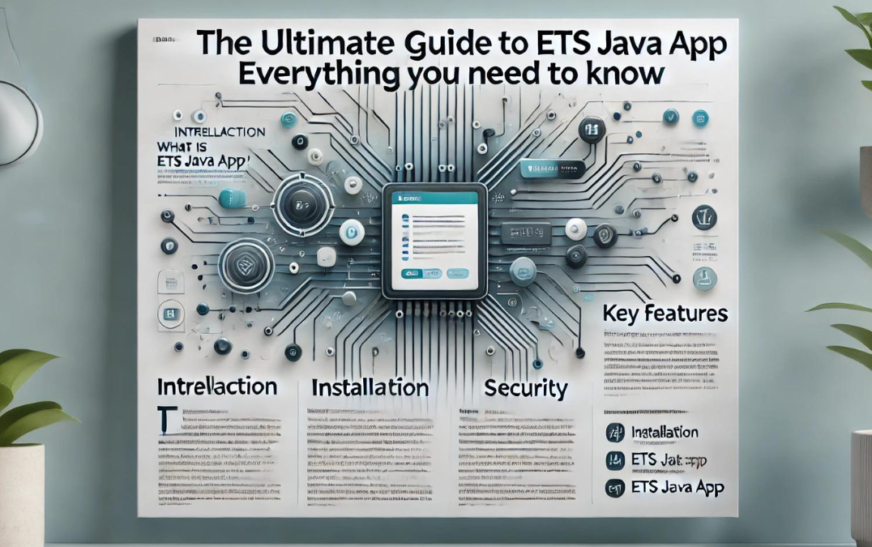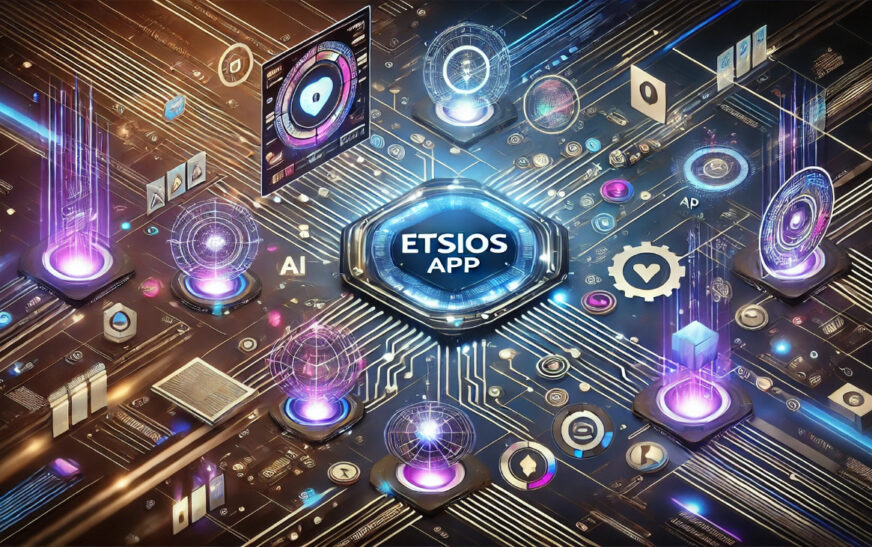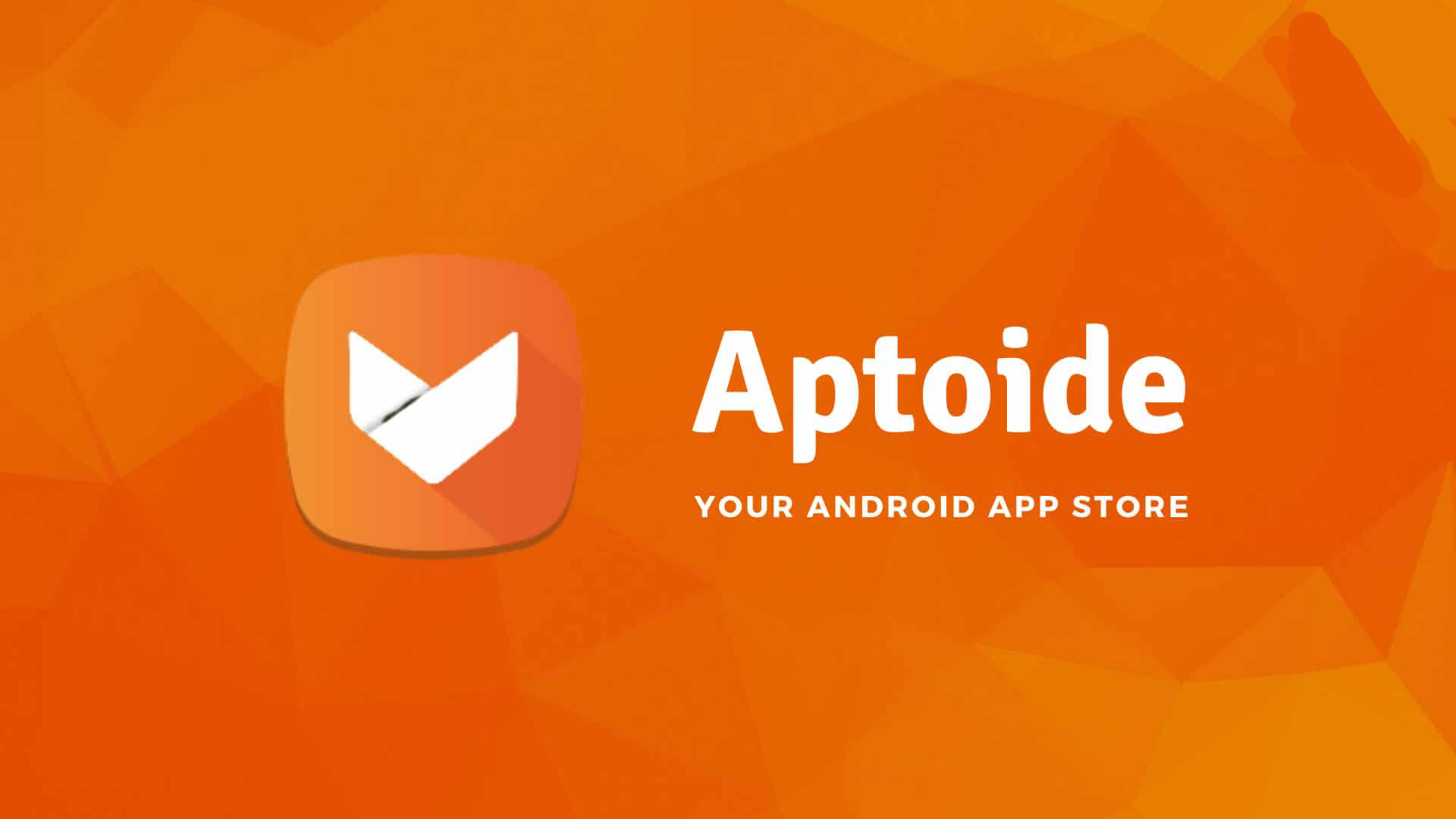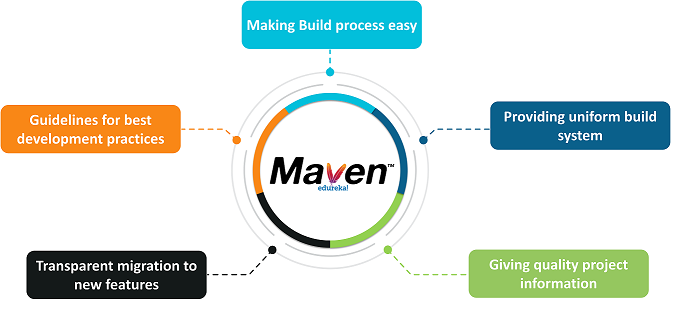In today’s fast-paced technology, businesses are constantly looking for better and scalable enterprise operation management solutions.Java has been the primary tool for enterprise development for decades due to its adaptability and robustness. It offers unparalleled performance at both tight-lip development scale and large-sized systems exceed: 133 to 116 JavaGuide etsjavaapp is a significant tool in this field–a framework or system to make simple and to enhance Java application development in enterprise environmentsThis guide offers a through explanation of ETSJavaApp, how to use it, and the best practicesfor creating efficient enterprise-level Java applications using it.
What is ETSJavaApp?
ETSJavaApp stands for the Enterprise Technology System Java Application. inputSystemsJava application is a comprehensive framework aimed for beefing up enterprise-level applications on Java. The development of portable, secure and modular applications are thus easier than ever before, because builders get a structured architecture and can reuse code. ETSJavaApp manages numerous Java technologies and practices as one complete system, thus allowing developers to concentrate on writing business logic while out of sight the underlying work on enterprise infrastructure is taken care of by the framework.
Key Features of ETSJavaApp:
- Modularity: As its name suggests, the framework offers modularity—making applications easy to break down into smaller, manageable modules. It achieves separation of concerns and inheritability of traditional web programming.
- Scalability: Meanwhile the ETSJavaApp framework is designed such that once you have a well-defined application in place scaled up to meet enterprise needs is relatively uncomplicated using this component-based web server solution.
- Security: The framework comes complete with security features designed to ensure Sun developers are attending, noting, up to pace.
- Extensibility: The Guide etsjavaapp program may be configured and expanded as needed to suit the individual requirements of any company or organization.
- Ease of Integration: It is convenient to combine it with other enterprise systems such as databases, messaging queues and external APIs services that are available on the net.
Why Use ETSJavaApp?
The language of Java in business has been popular for a long time, and during this time many enterprise-level tools and frameworks developed to aid programming of a large scale. One of these frameworks is ETSJavaApp, with special features which make enterprise development easier. So why not consider ETSJavaApp for your next project? Reasons can range from the very practical:
- Standardization: An example of this is They provide etsjavaapp methods that are uniform, enabling larger teams to work together more productively without bumping into each other. Consequently, the architecture throughout an application is kept consistent.
- Pre-built Components: It can provide pre-built components for common enterprise tasks. For example, it handles things like security verification, accessing databases, writing logs and handling exceptions. This saves yourself an awful lot of time which one instead directs toward business logic development.
- Improved Collaboration: With its modular approach, different teams can work on separate modules of the application without interfering with one another. Each module is checked independently that it works well and then added to the whole. The result: improved collaboration and faster development cycles.
- Cost Efficiency: Reducing a software product’s number of unique lines in long-term development and maintenance has a positive impact on maintaining overwhelming costs for ETSJavaApp.
- Enterprise-Grade Support: Many companies prefer frameworks that have a strong support structure and large, active communities. ETSJavaApp typically offers enterprise-grade documents to help developers by giving them the resources they need when debugging code or solving problems.
Getting Started with ETSJavaApp
Prerequisites
Before going further into development of you Sensjavaapp, please make sure have foundation knowledge following concepts:
- Core Java: A deep understanding of syntax, Java’s object-oriented programming methodology and standard libraries will be essential as you work through these tutorials–this includes parsing XML.
- Enterprise Java (JEE): You should be familiar with features in Java Enterprise Edition such as servlets, JSP and all manner of on one side enterprise design models.
- Build Tools: Understanding build tools like Maven and/or Gradle which are often used for dependency management in Java projects is vital.
- Version Control: Use Git or some other version control system is required for managing code and for collaborating with other developers. suffice as it might mean “Moving JavaRepository to another Server”
Setting Up Your Development Environment
To get started with ETSJavaApp, there are the following steps to take to configure your development environment:
- Install Java Development Kit (JDK): Download and install the latest version of Java Development Kit 11 or later from Oracle. Almost all corporate or enterprise-level Java applications are developed using this version.
- Choose an Integrated Development Environment (IDE): IntelliJ IDEA, Eclipse and NetBeans are three popular choices for software developers who are coding Java programs. These IDEs contain many useful toolkits making it easier to create a new Java project
- Install Build Tools: It’s guaranteed that you will need either Maven or Gradle installed beforehand so as to handle project dependencies and automate the build process.
- Download ETSJavaApp from official repo(via Maven dependency): Usually this is accomplished via the official download of ETSJavaApp from the central repository or through linking Maven to your own project in one line.
- Configure Your Project: After the framework is included, adhere to its documentation to configure your project. Typically this involves setting up a directory structure, configuring your application server and creating connections to databases or other services.
Building Your First Application
Once that is done, you can start developing your first application. ETSJavaApp simplifies the task by providing templates for popular application types, however there is still a general overview of what has to be done:
- Define the Architecture of the Application: Your starting point should be to define what kind of system and how you would organize the different parts to make it work. Within enterprise Java, the typical architecture can be categorized at top, middle, and bottom levels-each with its own particular responsibilities.
- Create Modules: You compose your program into different modules through the ETSJavaApp modularization function. For instance, you can do separate modules for authentication, database access, or business logic.
- Integrate Database: Use the database connectors supplied by ETSJavaApp, or go with JPA (Java Persistence API) for your application to connect to a database. The framework provides mechanisms for managing transactions and consistency of information in databases.
- Implement Business Logic: This is where 90% of a development project takes place. Write the logic for responding to user requests, processing information, and returning results. ETSJavaApp includes a variety of tools and design patterns that facilitate creating scalable maintainable business logic.
- Secure Your Application: ETSJavaApp includes security features such as role-based access control (RBAC), input validation, and encryption. Use these features to protect your application from common security problems.
- Test and Deploy: After carrying our development, run unit tests, integration tests, performance tests-for everything you must check to ensure that the application behaves as required. After passing inspection, deploy your application on the server or cloud computing service for production use.
Best Practices for Using ETSJavaApp
Make your applications modular Only through your application has been created can you reveal problems that could include So instead of testing cases at the end and discovery issues late into development, These both make both easier to test and can reveal problems more quickly.
- In the spirit of reusability: Whenever ETSJavaApp has built-in components, use them. Writing custom components for tasks that are common (such as user authentication or data validation) contributes to debt and complexity.
- Security: Enterprise applications are common targets for hackers. Therefore, it is critical to follow security best practices to ensure that your application is safe and secure. This includes applying HTTPS, checking user input properly, and using programming standards that comply with industry.
- Performance: It’s a simple fact that enterprise applications need to handle large amounts of data and many users. Monitoring your application’s performance with tools like JMeter and using caching plus asynchronous processing can help improve the performance.
- Continuous Integration/Continuous Deployment (CI/CD): Testing and deployment can be automated by using CI/CD pipelines. Every change goes through the pipeline smoothly. Such a policy reduces the chances of errors, when changes are made in development without having been tested thoroughly.
Conclusion
Guide etsjavaapp is a strong platform, simplified enterprise Java application development to standardize, modular and scalable architectural framework. Reusing pre-built components with this framework, and by following good practices as well as security guidelines, developers can build high-performance simple-to-maintain enterprise systems with top quality results. Whether you’re designing a new application from the ground up, or rejuvenating a system already in use, ETSJavaApp Doubles as an excellent way to simplify the development process and make success inevitable in today’s ever-changing world of enterprise computing.










